Published Jun 19, 2019
How Star Trek Took the X-Men to Space
We're looking back on three crossovers that changed both teams for the better.
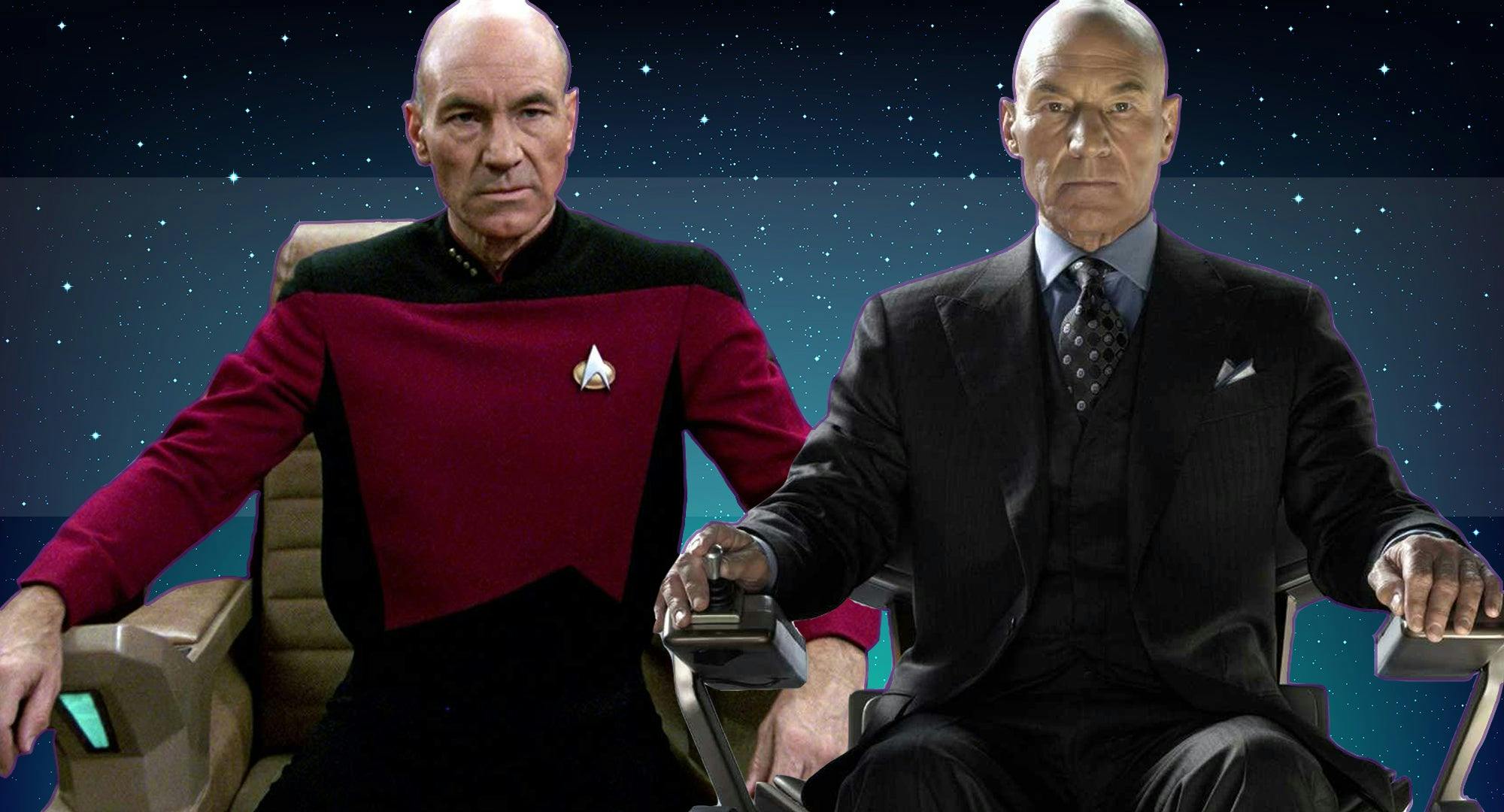
StarTrek.com // 20th Century FOX
You wouldn’t know it by watching the movies, but the X-Men are indeed a spacefaring superhero team. In their 50+ year history, Marvel Comics' Merry Band of Mutants has encountered space pirates, intergalactic empires, and many invaders from beyond. In fact, the Dark Phoenix Saga, an X-Men story so famous that it has been adapted into two separate movies (2006’s X-Men: The Last Stand, and 2019’s Dark Phoenix, starring Next Generation guest-star alum Famke Janssen, and Game of Thrones’ Sophie Turner, respectively), takes place largely in outer space, at least in the comics.
That said, one can forgive the movies’ tendency to reduce space battles to street fights, as the latter more obviously align with the X-Men’s core ethos. Inspired by Professor Charles Xavier, the X-Men fight to create a world where mutants can live peacefully with humans.
That’s an Earth-focused goal, to be sure, but it's one that science fiction in general — and Star Trek in particular — has been exploring through a cosmic lens. So its unsurprising that some of the most potent visions of the X-Men’s goal happen when they crossover into the Trek universe.
The X-Men and Enterprise crews have met on three different occasions; twice in single-issue comic book stories and once in a prose novel. Their adventures featured the Next Generation crew twice, and once featured characters from TheOriginal Series. The stories feature all of the fan nods one would expect from such meetings: Beast and Bones both answering to Nurse Chapel’s call for Dr. Henry McCoy, the Borg assimilating the infamous mutant-hunting Sentinels, and respectful flirtations between Picard and Storm.
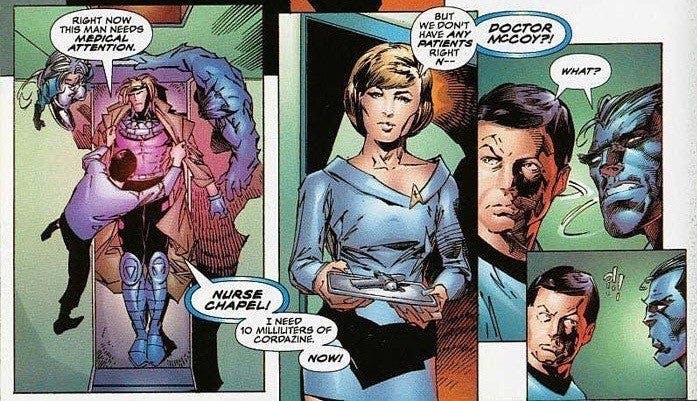
StarTrek.com
But more importantly, the stories emphasize the importance of the X-Men concept by enfolding it into Star Trek’s galactic explorations.
Published in 1996 and written by Scott Lobdell with a host of artists, Star Trek / X-Men finds the X-Men boarding the U.S.S. Enterprise after pursing the evil energy being Proteus across dimensions. Proteus entered the Trek universe to bond with the body of Lt. Commander Gary Mitchell, a Starfleet officer who was compromised by his psychic powers until Kirk used deadly force to stop him, in the season-one episode “Where No Man Has Gone Before.”
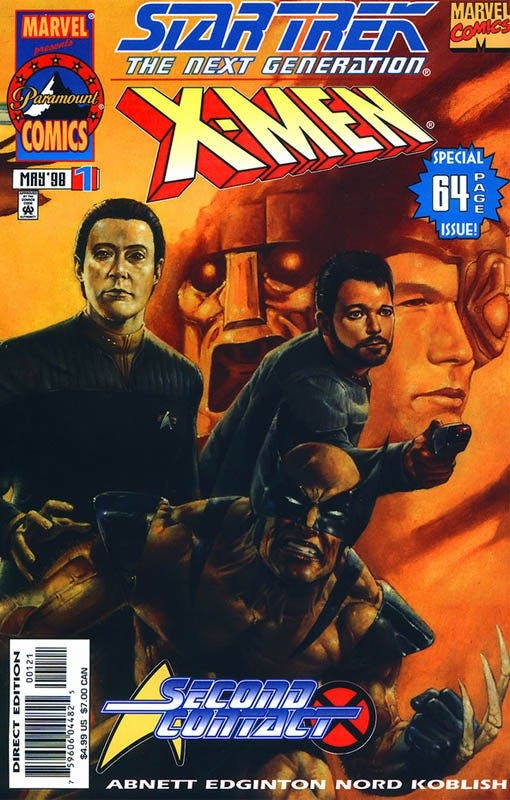
Marvel Comics / Paramount
As its name suggests, 1998’s Star Trek: The Next Generation / X-Men: Second Contact, written by Dan Abnett and Ian Edginton and illustrated by Cary Nord and Scott Koblish, takes place minutes after the film Star Trek: First Contact. Traveling through time from the 24th century, the Enterprise is redirected by Avengers villain Kang the Conquerer, who seeks control over new time streams by creating anomalies such as mutant James Proudstar serving on Deep Space 9, and Tasha Yar hunted by Sentinels in the Days of Future Past timeline. With the aid of Wesley Crusher and the Traveler, the two teams repel Kang and correct the anomalies.
Written by Michael Jan Friedman, the 1998 novel Planet X picks up immediately after Second Contact, with the X-Men launched into the TNG universe instead of their proper timeline. La Forge’s attempts to send the mutants home get delayed when the Enterprise is dispatched the planet Xhaldia, where its own mutant population is being oppressed by a fearful government.
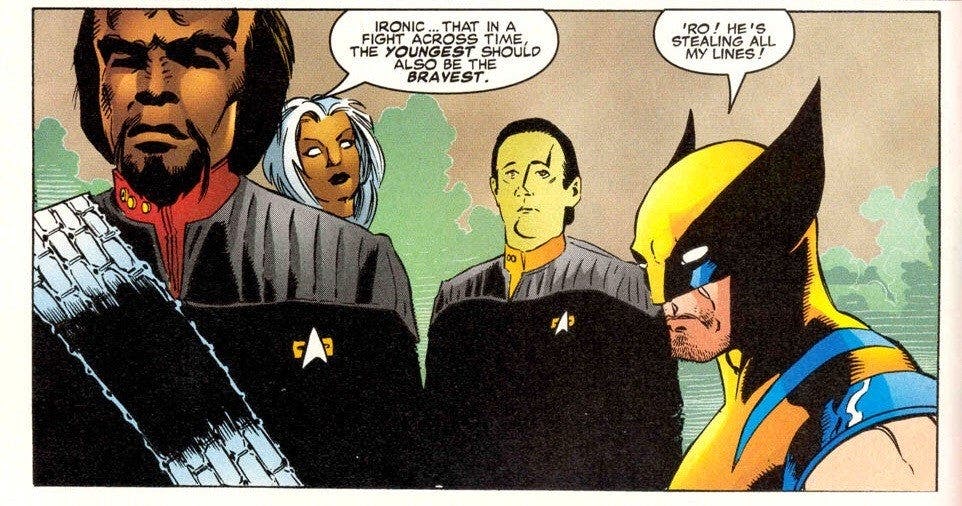
StarTrek.com
To certain degrees, each of these stories involve the X-Men being encouraged by the United Federation’s very existence. That element is least pronounced in TOS adventure X-Men/Star Trek. Although a mental link between Jean Grey, Kirk, and Mitchell/Proteus leads to deliberation between the two about the Captain’s decision to kill Mitchell, there’s little room for nuance among the crossover fun. Instead of debating the morality of allowing a dangerous creature to live, the comic would rather show us Spock using the nerve pinch on Wolverine or Scotty supplementing the warp drive with Bishop’s energy displacement abilities. The story does close with Cyclops expressing admiration for Starfleet and Spock teasing Bones about humans exceeding genetics, but they feel like hasty closing buttons.
Second Contact is also interested in pairing characters over ideas, but the adventures here necessarily involve both series’ core beliefs. When Picard and Troi join Colossus and Nightcrawler to free mutants from Sentinel-enforced concentration camps, or when Wolverine and Storm team with Data and Worf against Borg assimilation, they’re asserting their difference over homogeny.
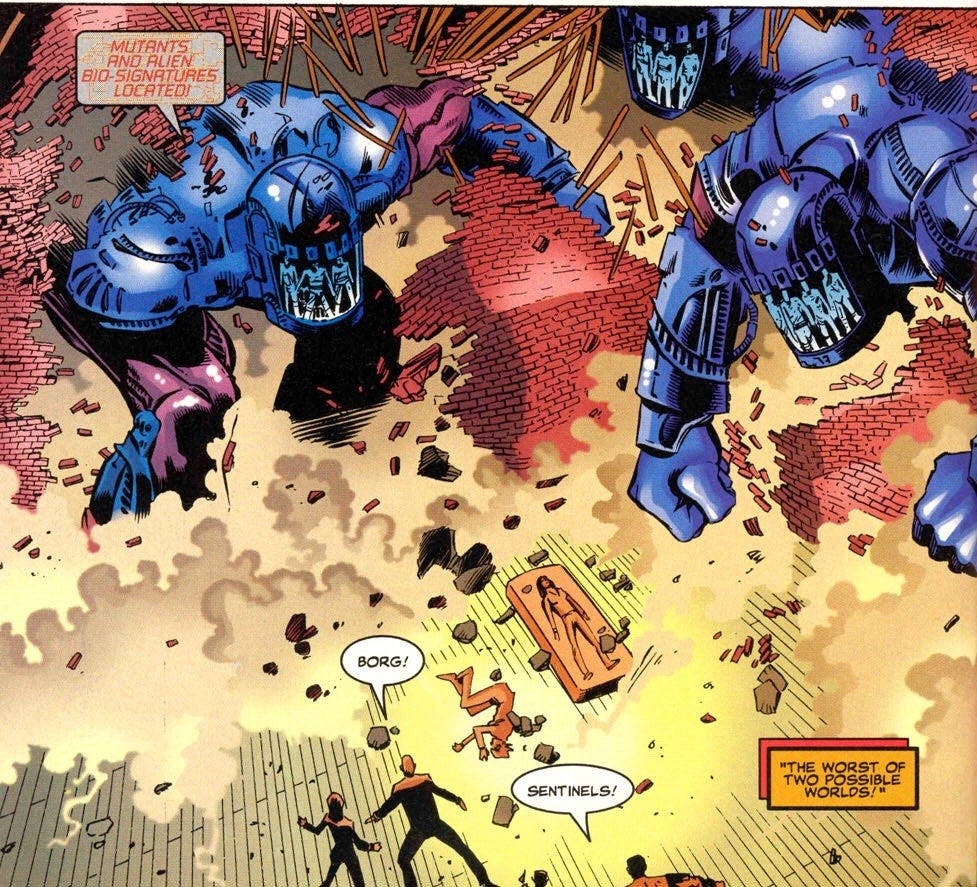
Marvel / StarTrek.com
Planet X contains just as many adventure plot points as its predecessors, complete with the Enterprise engaging in combat with an alien battleship, Colossus and Data interceding in an uprising of the transformed youths of Xhaldia, and plenty of scraps in the holodeck for Wolverine and Worf.
But the novel’s longer structure allows for deeper meditations on the nature of mutation and fear. When mutants (called “the Transformed”) begin manifesting on Xhaldia, the local government knowingly violates the young people’s rights by gathering them in internment camps. The Xhaldian’s decision violates Starfleet directives, and the Enterprise is ordered to intercede, but Picard feels too often tempted to assert order rather than protect the dignity of the oppressed Transformed.
Friedman plays out this conflict in miniature in a conversation between Storm and Picard, after the latter expresses frustration with Archangel’s insistence on flying recklessly through the Enterprise halls. Unlike their world, in which mutants must constantly struggle for acceptance, Storm and her fellow mutants experience a mix of hope and disbelief in the Federation’s reality. Storm notices with amazement, "prejudice and race-hatred seem to have been eliminated,” and that people do not shun mutants, but have “done everything in their power to embrace us.” So overwhelming is this reality, Storm explains, that Archangel keeps pushing the envelope because he cannot allow himself to believe it.
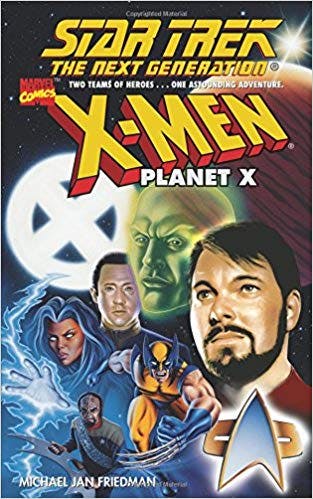
Pocket Books
As the X-Men fight to protect the mutant youths from the Xhaldian oppressors, while also upholding Federation regulations to broker peace for everyone on the planet, they see a continuing need for teams like their own. But they’re refreshed in their fight with the knowledge that Starfleet exists, that people like Picard and Counselor Troi exist, and that there’s a future where dignity is extended to all, no matter how different.
This aspect is the greatest appeal of these crossovers. While the mashup and team-up novelty is admittedly fun for fans, the real revelation is how Trek expands the X-Men’s central conceit into cosmic sci-fi. At their core, X-Men stories are about the fight for acceptance with difference; the demand for affirmation and dignity for all people is made issue after issue using the language of superhero tropes. By teleporting those ideas into the future and watching them play out on alien planets like Xhaldia, these crossovers remind readers that differences between lifeforms are a universal constant. Like so many Star Trek stories, these event issues and novel give us hope that such goals won’t seem lofty and alien, but will be matters of fact. Combining the best traits of power fantasy and speculative fiction, X-Men / Star Trek crossovers encourage us to look to the stars, even as we continue the struggle in the here and now.
Joe George (he/his) writes about pop culture for outlets such as Tor.com, Bloody Disgusting, and Think Christian. He collects his work at joewriteswords.com and tweets from @jageorgeii.

